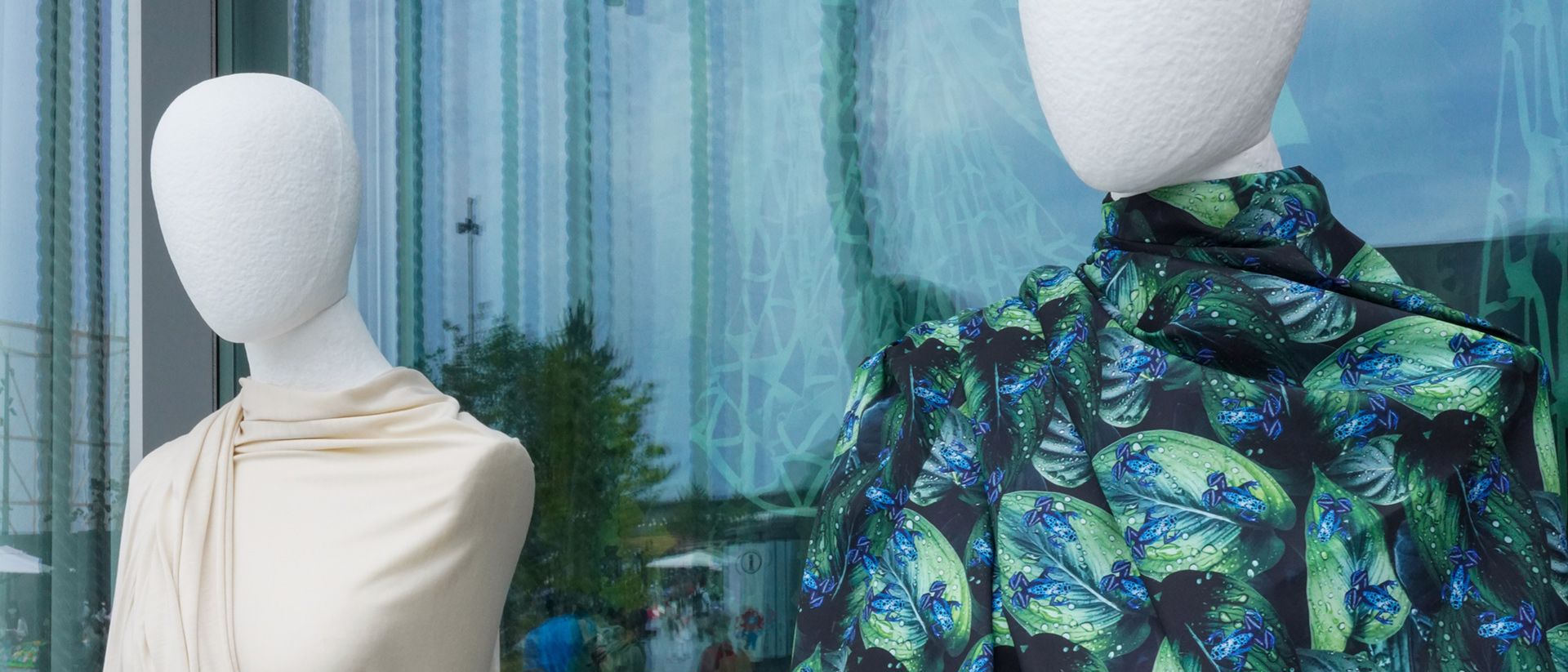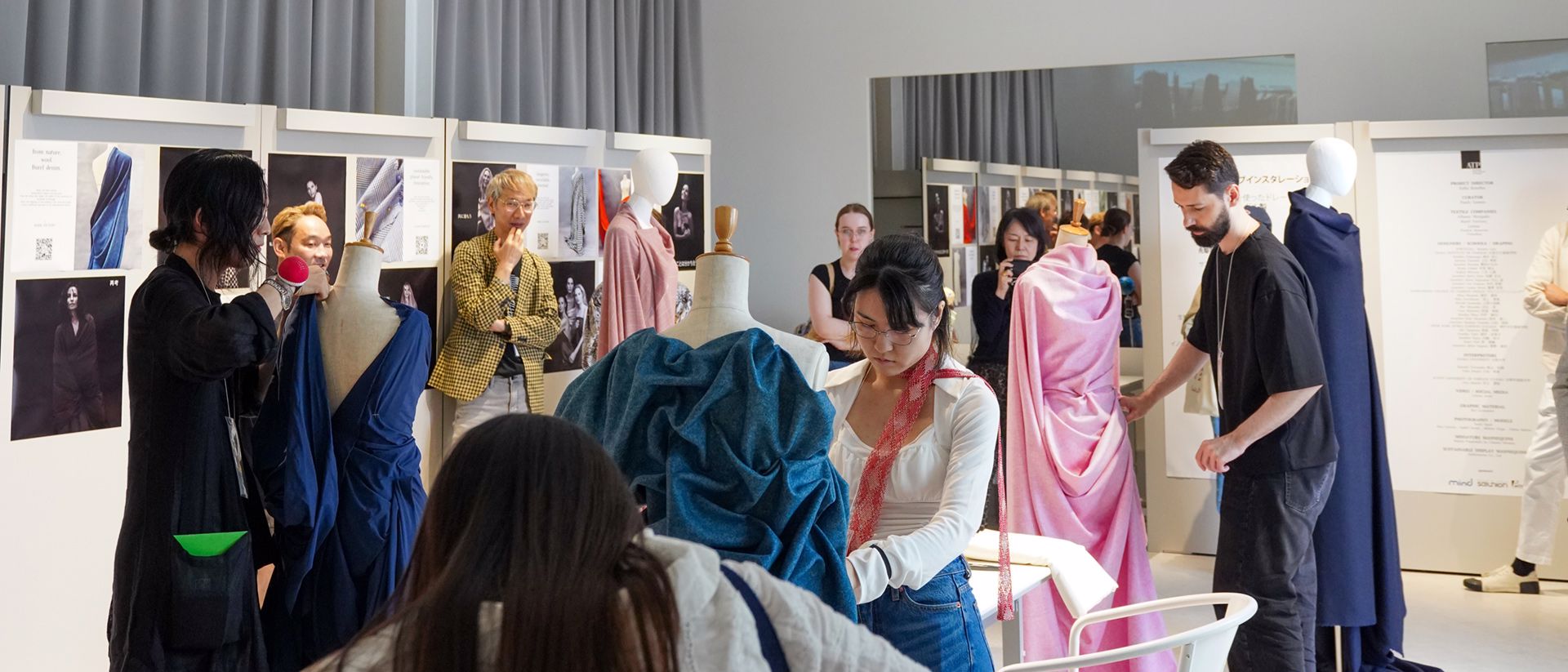From June 12 to 15, the Portugal Pavilion at Expo 2025 Osaka hosted a unique initiative that brought together Portuguese textile tradition and Japanese creativity. The installation “TEXTILE LIVE – Draping with Sustainable Materials, Made in Portugal”, promoted by the Textile and Apparel Association of Portugal (ATP), highlighted the potential of sustainable materials produced in Portugal through a creative collaboration with 15 young Japanese designers from three prestigious fashion schools: Osaka Institute of Fashion, Marronnier College of Fashion Design, and Kobe Bunka Fashion College.
Curated by Paulo Gomes, the initiative captivated both the public and the students. Over four days, the young designers brought original pieces to life in live draping sessions, using exclusively Portuguese sustainable fabrics. Their creations were inspired by themes such as the ocean, nature, and tradition.
Curated by Paulo Gomes, the initiative captivated both the public and the students. Over four days, the young designers brought original pieces to life in live draping sessions, using exclusively Portuguese sustainable fabrics. Their creations were inspired by themes such as the ocean, nature, and tradition.

“The idea was to connect tradition and innovation — both in the materials and in the creative process. Portugal is at the forefront of textile sustainability, and this event was a way to show that to the world, but also to learn from the sensitivity and perspective of Japanese designers,” explains Paulo Gomes.
Among the students, Keishin Fukunaga stood out with a piece that conveyed strong environmental awareness:
“The fabric was made from recycled marine waste. My idea started with the image of clothes soaked by the ocean. When wet, they stick to the body — I used draping to express that feeling.”
Kokoa Mitoma also shared her creative process:
“I was inspired by flowers and nature. I like to let the fabric guide me — I don’t seek perfect symmetry. I prefer free and spontaneous shapes.”
Among the students, Keishin Fukunaga stood out with a piece that conveyed strong environmental awareness:
“The fabric was made from recycled marine waste. My idea started with the image of clothes soaked by the ocean. When wet, they stick to the body — I used draping to express that feeling.”
Kokoa Mitoma also shared her creative process:
“I was inspired by flowers and nature. I like to let the fabric guide me — I don’t seek perfect symmetry. I prefer free and spontaneous shapes.”

Kanami Warada, from Osaka Bunka Fashion College, created a summer dress designed to be worn at the beach, inspired by the sound of the waves she heard upon entering the pavilion. Imagining the clash of strong waves, she chose to keep the indigo blue as the fabric base, letting it fall from top to bottom and gathering it to form a soft, rounded silhouette.
Also participating in the initiative was Portuguese designer Renato Luiz, who sought to translate the movement of the sea in his piece:
“I tried to bring the waves to life through draping, giving the piece movement to make it more interesting. Despite using tartan — which is very geometric and almost the opposite of waves — the draping allowed me to balance the contrast and bring dynamism to the look. I think I succeeded.”
Also participating in the initiative was Portuguese designer Renato Luiz, who sought to translate the movement of the sea in his piece:
“I tried to bring the waves to life through draping, giving the piece movement to make it more interesting. Despite using tartan — which is very geometric and almost the opposite of waves — the draping allowed me to balance the contrast and bring dynamism to the look. I think I succeeded.”

In addition to the live creations, the installation featured a photo exhibition with Portuguese models, a paper doll installation by artist Cláudia Oliveira, eco-friendly busts produced in Japan, and explanatory videos about the fabric production processes.
The diversity of textile solutions on display showcased the excellence and innovative capacity of the Portuguese industry, with materials such as responsibly produced wool and linen; bio-based fibres derived from food industry by-products; recycled PET bottle polyester; seaweed-based finishes; and naturally dyed fabrics using eco-friendly processes.
The initiative was also supported by the companies Albano Morgado, Burel Factory, Lemar, Positive Materials, and Trimalhas.
See the images.
The diversity of textile solutions on display showcased the excellence and innovative capacity of the Portuguese industry, with materials such as responsibly produced wool and linen; bio-based fibres derived from food industry by-products; recycled PET bottle polyester; seaweed-based finishes; and naturally dyed fabrics using eco-friendly processes.
The initiative was also supported by the companies Albano Morgado, Burel Factory, Lemar, Positive Materials, and Trimalhas.
See the images.




